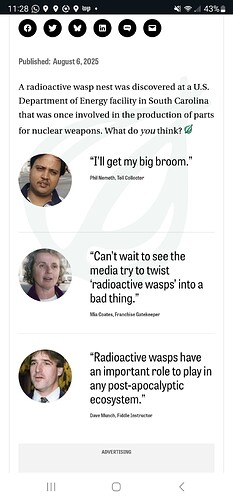[…]
Rolls-Royce chief executive Tufan Erginbilgic told the BBC it has the “potential” to become the UK’s highest-valued company by overtaking the largest firms on the London Stock Exchange thanks to its SMR deals.
[…]
Rolls-Royce already supplies the reactors that power dozens of nuclear submarines. Mr Erginbilgic said the company has a massive advantage in the future market of bringing that technology on land in the form of SMRs.
[…]
But it remains an unproven technology. Mr Erginbilgic conceded he could not currently point to a working SMR example but said he was confident in its future potential.
[…]
Hype, hype, hype. Every company, every technology has potential.
The narrative here is that RR will be able to build world-beating SMRs because RR’s PWR reactors have been powering the UK’s nuclear submarines1) since 1966 and will also power the next generation of British SSBNs, the Dreadnought class, currently under construction.
Thing is, those reactors run on highly enriched uranium (HEU) enriched to between 93% and 97%. This makes it possible that the core has a design is life of about 30 years, i.e. it is supposed to last as long as the submarine itself without the need for refueling or a reactor refit in its service life.
Plus the reactor floats in a literal ocean of coolant and if something really, really bad happens the boat can be scuttled.
RR’s SMR will use uranium dioxide for fuel and light water2) as both coolant and moderator in a close-coupled three-loop pressurised water reactor (PWR) design.
In other words, a conservative design very close to the naval reactors; the main differences being
(1) The fuel itself and the ability to refuel during operations. Meaning a new core design.
(2) The usual infrastructure for nuclear power plants on land like a containment building and cooling tower(s), only smaller.
Insofar I agree with RR that it should be feasible to develop a naval reactor designed for a submarine into a SMR for use on dry land.
However, all the cool kids, i.e. the US startups receiving billions from Microsoft, OpenAI, Google, Meta, AWS, … go with thorium for fuel and molten-salt reactor designs.
So far, RR SMR has received considerable less money from investors (see the first link above) and none of them are IT/AI companies.
RR SMR is in danger of being overlooked by big money and trailing in the wake of their competitors, possibly capsizing.
I therefore see Erginbilgic’s lofty statements as an attempt to create media buzz that attracts attention.
1) Not the RN’s aircraft carriers, though. Not even the new-ish Queen Elisabeth class. Those have two RR Marine Trent MT30 (36 MW) gas turbines, two Wärtsilä 16V38 (11 MW) and two Wärtsilä 12V30 (9 MW) marine diesel engines, powering four GE 20 MW electric propulsion motors that drive two shafts with fixed-pitch propellers. Nuclear propulsion was rejected “due to its high cost and manpower required”. Go figure. Submarines need to be stealthy, that’s their whole point. Nuclear propulsion is ideal for that and justifies the markup. Whereas the main point of carrier groups is to project power and be highly visible on purpose. The USN manages nuclear propulsion for carriers because they have, to some extent, economies of scale and the budget.
No, I won’t talk about the catapults.
2) Also known as dihydrogen monoxide or “water”.





